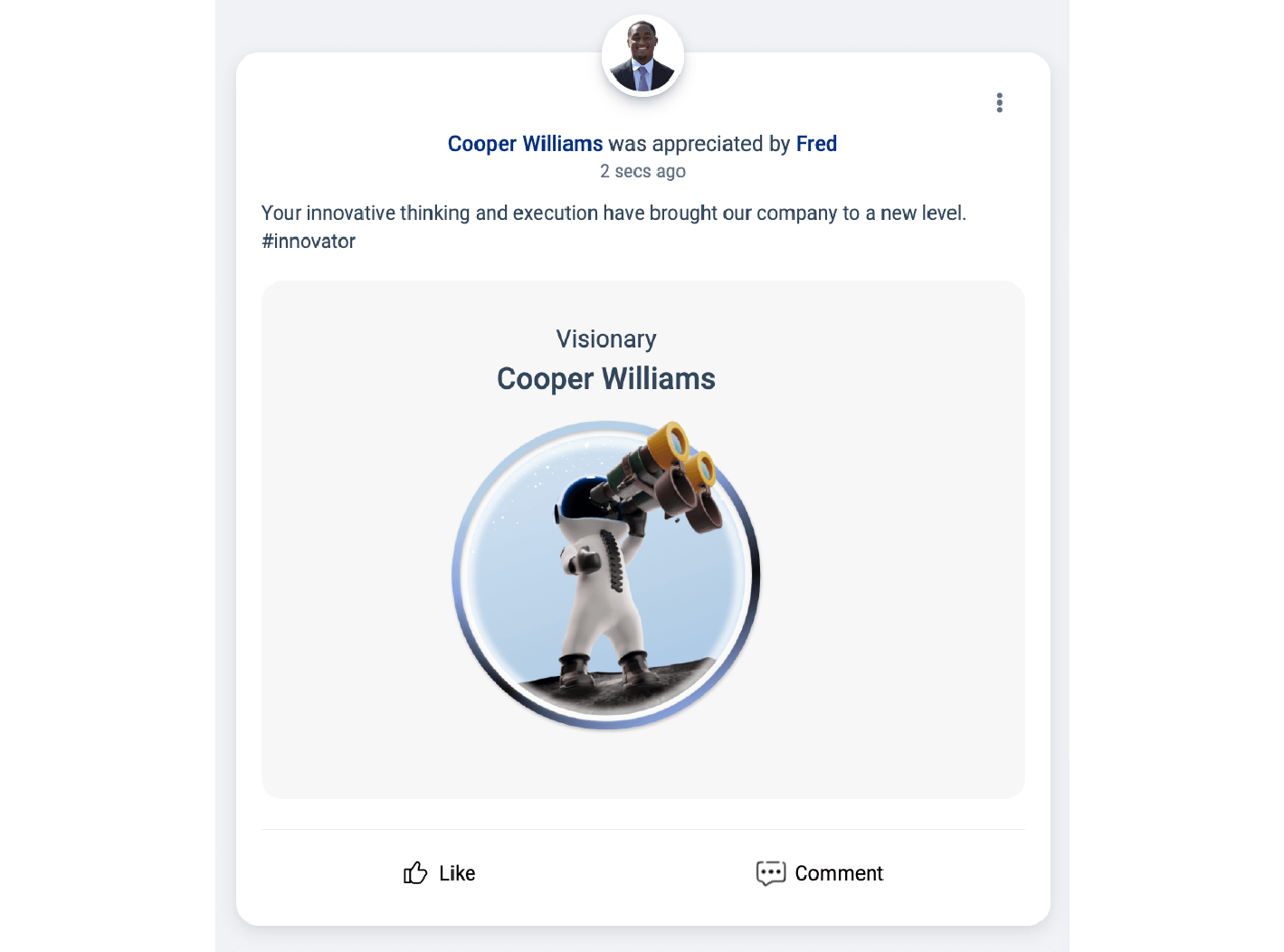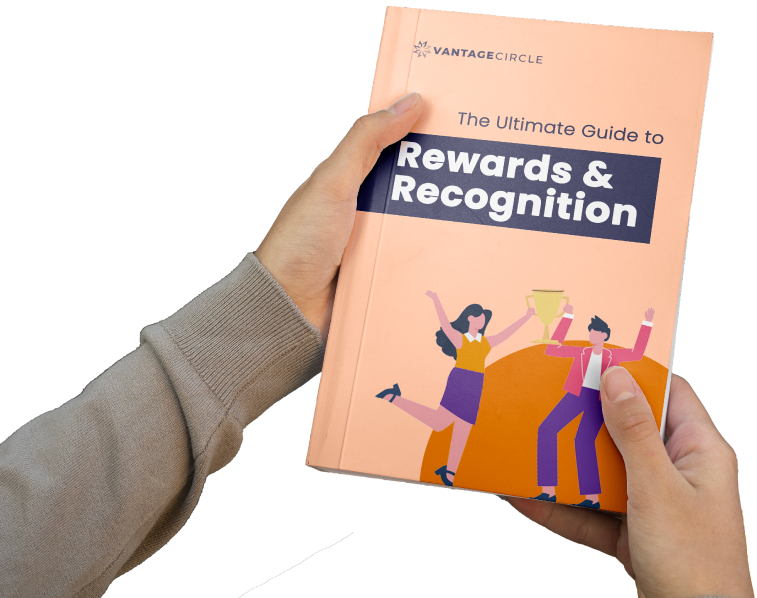25 Best Employee Incentive Examples to Boost Engagement & Retention
Ever wondered what truly makes employees feel valued beyond just a paycheck? Sure, competitive salaries matter, but let’s be real, the little extras often make the biggest difference.
I’ve personally seen how a few well-thought-out incentives can boost morale, improve retention, and even make Monday mornings seem less dreadful. And the numbers back it up: 81% of employees say they are more motivated when their boss shows appreciation for their work.
Today’s workplaces are rethinking employee benefits to go beyond the basics. Whether it’s monetary rewards, unique experiences, or heartfelt recognition, the right approach can make all the difference in boosting employee engagement and helping you hold on to your best talent.
In this blog, we’ll explore some of the best employee incentive examples and ideas designed for the modern workforce. Plus, we’ll break down how to implement them effectively to boost retention and drive productivity.
So, let’s dive in!
What are Employee Incentives?
Ever wonder why a simple bonus, shout-out, or extra day off can instantly boost an employee’s motivation? That’s the power of employee incentives. They are a set of strategic rewards designed to encourage positive workplace behavior and drive employee performance.
However, many people confuse employee incentives with employee benefits. For instance, benefits, like health insurance and retirement plans, are part of an employee’s overall compensation package.
Incentives, on the other hand, are performance-driven perks that recognize and reward specific actions such as hitting a goal or going the extra mile.
Why are Employee Incentives Important?
The power of well-structured employee incentive is undeniable. It leverages behavioral psychology, where immediate rewards tend to reinforce positive behavior.
Furthermore, employee incentives shape the entire employee's experience. When people feel appreciated, they’re happier and more likely to recommend their workplace to others. They even go the extra mile and stick around for the long haul.
And if you're wondering about the ROI of incentives. Think about the cost of losing an employee. Josh Bersin once quoted that the cost of losing a great employee can be 1.5 to 2 times their salary.
Therefore, instead of spending big on replacing talent, why not invest in keeping them happy, engaged, and motivated?
Understand the Categories of Employee Incentives
1. Monetary incentives
Monetary incentives are designed to motivate employees by offering financial rewards for achieving specific goals or demonstrating desired behaviors. Examples of monetary incentives include bonuses, commissions, profit-sharing, and performance-based pay.
2. Non-monetary Incentives
Not every incentive has to come in the form of cash. Non-monetary initiatives focus on providing recognition and enhancing employee well-being without involving direct financial compensation.
Popular non-monetary incentives include public recognition, flexible work schedules, extra paid time off, and professional development opportunities.
3. Experiential Incentives
Employees today are increasingly valuing experience over material rewards. Experiential incentives offer unique, memorable rewards that contribute to an employee’s overall happiness and well-being.
Examples of experiential incentives include company retreats, exclusive networking opportunities, all expenses paid travel opportunities, creative team activities such as escape rooms, cooking classes etc.
4. Wellness Incentives
The modern-day workforce is experiencing an alarming rise in stress, burnout, and mental health challenges. According to data from the Occupational Safety and Health Administration (OSHA) indicates that 83% of U.S. workers suffer from work-related stress, with 54% reporting that this stress affects their home life.
This is where wellness incentives come in handy! It tackles workplace stress by offering mental health support, on-site wellness programs, gym memberships, and fitness reimbursements to promote a healthier work environment.
5. Social impact Incentives
Social impact incentives help employees to contribute to causes that align with their values and make a meaningful impact on society. Since many employees, particularly Millennials and Gen Z, are motivated by purpose-driven work.
Some of the examples include paid volunteer days, charitable donations, paid volunteer days, corporate social responsibility (CSR) Initiatives etc.
Businesses in U.S. collectively spend $176 billion on incentives, recognition, rewards, incentive travel, and corporate gifting.
25 Best Employee Incentive Examples
Monetary Incentives

1. Performance Bonuses
Performance bonuses are financial rewards given to employees for achieving specific goals, targets, or milestones. They come in the form of annual or quarterly performance bonuses to incentivize employee performance.
This type of bonus gives employees a defined time period to work towards their goals and demonstrate their capabilities.
Recommended Read: 12 Employee Bonus Ideas To Engage the Workforce
2. Profit Sharing
Profit-sharing programs can be a persuasive tool to incentivize employees as they foster a sense of shared ownership. It also creates a culture of transparency in the organization.
Take cash bonus plan for instance, under this plan, a portion of the company's profits are distributed to employees as cash bonuses.
3. Incentive Stock Options (ISO)
Incentive Stock Options (ISOs) are a type of equity compensation that gives employees the chance to buy company shares at a set exercise price (also called the strike price). The best part? This price is often lower than the stock’s market value, meaning employees can buy shares at a discount.
4. Spot Awards
Spot awards are a hugely effective and fun way to reward your employees for their contribution. It can take many forms, including cash incentives, redeemable points, or even gift vouchers, making them versatile and easy to implement.
These types of awards are designed to provide instant recognition, creating a strong link between the employee’s action and the reward.

Source: Vantage Recognition
5. Gift Cards
Gift cards are one of the most versatile and widely appreciated ways to reward employees. They provide a personalized touch, allowing employees to select the gift that resonates most with them.
Whether it’s a dining experience, or subscription service, having access to a global catalog of diverse gift card options can give your workforce the freedom to choose what truly brings them joy.
6. Tuition Reimbursement
Tuition reimbursement incentives are designed to cover employees' education expenses, either partially or entirely. These incentives help employees gain new skills or build on existing ones so they can continue to excel and become even better prepared to succeed in their roles.
7. Loyalty Bonuses
Retaining skilled employees in the tech industry is critical, especially when competing with other companies for top talent. Offering loyalty bonuses based on tenure milestones is a great way to reward employees for their commitment and encourage long-term retention.
8. Home Office Stipends
Remote and hybrid work setups have made home office stipends a must-have incentive. A well-equipped workspace can lead to better focus and fewer distractions.
Sitting at a stiff dining chair or a wobbly coffee table with a laptop isn’t exactly ideal for long-term productivity. That’s why companies are providing stipends to cover essentials like ergonomic chairs, dual monitors, standing desks, and high-speed internet upgrades.
Non-monetary Incentives

9. Public Recognition
Public recognition is a powerful way to celebrate employee contributions and accomplishments while fostering a culture of appreciation. Furthermore, you can encourage your employees to appreciate each other by utilizing a peer-to-peer recognition program.

Source: Vantage Recognition
10. Recognition Events
Who doesn’t love being appreciated? Employee recognition events celebrate employees' hard work, making them feel valued and motivated to keep up the great work.
These events create a culture of appreciation, strengthen team morale, and make employees feel like their efforts truly matter. You can also include rewards such as gift cards, plaques, or public acknowledgments, during these events.
11. Recognition Badges
Employee recognition badges offer a fun and gamified way to celebrate achievements. Create a system where employees can earn badges for specific accomplishments, such as completing a challenging project, exceeding goals, or demonstrating teamwork. To make it more dynamic, offer a diverse range of badges tailored to various accomplishments.

Source: Vantage Recognition
12. Professional Development Opportunities
Growth doesn’t stop after landing a job! Providing scholarships to employees for advanced degrees, certifications, or specialized training can help them enhance their skills. Sometimes even a promotion could be considered a career development incentive.
13. Personalized Thank-you Notes from Leadership
Personalized thank-you notes from managers, executives, or even the CEO show employees that their hard work is truly seen and appreciated. Unlike generic emails or mass messages, a handwritten note adds a personal touch.
14. Company Swag
Company swag, when done right, creates a sense of pride and connection among employees. While branded water bottles and hoodies are always appreciated, the real impact comes from high-quality, thoughtfully curated items.
Talking from my personal experience, one of the best experiences I had was when my company sent out customized welcome kits for new hires. It made me feel instantly connected to the team before I even started my first day!
Experiential Incentives
15. Flexible Work Arrangements
Flexible work arrangements, such as remote work, hybrid models, or flexible hours empower employees to manage their work and personal lives more effectively. This approach prioritizes work-life balance and sends a strong message of trust and support.
16. Networking Opportunities
Host regular networking events, such as luncheons or speaker sessions, where employees can exchange ideas and learn from one another. It can help build meaningful connections with peers, mentors, and industry experts.
17. On-Site Amenities
On-site amenities enhance the workplace experience and demonstrate that the organization values its employees’ time and comfort.
You can provide facilities such as fully stocked cafeterias, gyms, relaxation zones, childcare, or wellness rooms. You can also customize these amenities to meet the specific needs of your workforce, ensuring accessibility and inclusivity.
18. Commuter Benefits
No one enjoys spending a fortune on gas, train tickets, or parking fees, especially when those costs add up fast. Offering pre-tax commuter benefits, free parking passes, or even company-sponsored rideshares helps take the financial sting out of getting to work.
Some companies go a step further, providing shuttle services with Wi-Fi so employees can catch up on emails or just unwind before they even step into the office.
19. Team Outings
Nothing bonds a team quite like a memorable outing. And no, I’m not talking about those forced, awkward icebreakers in conference rooms. Instead opt for unique experiences like escape rooms, sports events, cooking classes, or even outdoor adventure activities.
But the best approach is often the one where your employees have a say in it. Let them vote on the type of outing to ensure everyone feels included.
20. Offer Monthly Spa Day
Many employees often experience physical and emotional exhaustion due to long shifts and high-pressure environments. Offering a monthly spa day as an incentive provides them with an opportunity to relax and rejuvenate.
To make it more feasible, you can create a rotation schedule to ensure that all team members have a chance to enjoy the benefit without disrupting the workflow.
21. End-of-the-year Party
After months of hard work, tight deadlines, and non-stop hustle, employees deserve a chance to kick back, celebrate wins, and connect outside of work. Whether it’s a live music event or even a destination retreat, a great party keeps employees motivated heading into the new year.
For companies on a budget, even a well-executed virtual party with interactive games, personalized gifts, and fun recognitions can make a lasting impact.
Wellness Incentives
22. Wellness Programs
Wellness programs are a powerful way to promote healthier lifestyles among your workforce, enhancing both their physical and mental well-being.
Implementing corporate wellness apps like Vantage Fit makes it easy to incentivize employees to stay active through fun and engaging fitness challenges.
They can participate in activities such as step challenges or mindfulness sessions, all while earning redeemable points for completing tasks.

Source: Vantage Fit
23. Employee Assistance Programs
Work can be stressful, and employees often juggle personal and professional challenges. That’s where Employee Assistance Programs (EAPs) come in. It offers free counseling, wellness resources, and professional guidance, helping employees navigate their challenges while staying focused at work.
24. Childcare Assistance
Childcare is one of the biggest challenges for working parents, and companies that offer childcare support are making a huge impact on employee retention. Providing on-site daycare or crèche along with flexible work policies reduces the stress of managing work and family life.
Outdoor apparel company Patagonia has been offering on-site childcare for decades, with nearly 100% of new mothers returning to work, setting an industry benchmark for family-friendly policies.
25. On-Site Fitness Classes
We all know exercise boosts productivity and reduces stress, but for employees, it might often seem hard to squeeze in a gym session after a long workday. That’s why on-site fitness classes are a fantastic perk.
For instance, having a Wednesday morning yoga class right in the office can be a convenient way to let your employees stay active without needing to hit the gym after work. And for fully remote teams, virtual fitness challenges or gym membership reimbursements work just as well!
How to Create an Effective Employee Incentive Program?
Step 1. Define Objectives
Clearly outline the purpose of the incentive program. Are you looking to boost productivity, improve morale, reduce turnover, or encourage innovation? Defining goals ensures alignment with organizational priorities.
For instance, if your goal is to increase employee engagement scores try to design recognition programs that encourage employees to actively appreciate each other’s efforts. It will create a sense of community and collaboration.
Step 2. Understand Employee Preferences
Did You Know? 99% of employees have unique reward preferences, which makes incentives an excellent alternative to a traditional reward system. (Source: SHRM)
Instead of guessing your employees' preferred incentives, conduct employee surveys or feedback sessions to understand what motivates your employees. Begin by asking open-ended questions where employees can suggest their ideal incentives.
Once you’ve collected responses, identify the most popular or feasible suggestions and compile a list. You can then follow up with a second survey, allowing employees to vote for their favorites.
This way you not only involve them directly in designing the incentive program but also ensure that the program resonates with their needs and preferences.
Step 3: Select Incentive Types
When it comes to designing a successful employee incentive program, a one-size-fits-all approach doesn’t work. Therefore, a well-balanced mix of monetary, non-monetary, experiential, wellness, and social impact incentives ensures that every employee feels valued and motivated.
Step 4. Set Clear Criteria
For an employee incentive program to be successful, it must be grounded in fairness, clarity, and transparency.
Employees need to understand the eligibility criteria, the actions or achievements required to earn incentives, and the steps involved in redeeming them. By doing so you eliminate ambiguity and make the incentive program more impactful.
Step 5. Communicate Effectively
Once you have designed an employee incentive program, it's time to get the word out! Use multiple channels to announce and explain the program. You can do it through company wide email or newsletter, detailing its benefits, processes, and procedures.
Leverage your organization’s intranet and instant messaging platforms for timely updates and reminders. It will help maintain enthusiasm and ensure transparency.
Step 6: Track and Optimize Performance
Implementing an employee incentive program is just the beginning. To ensure its success, organizations must regularly track its progress and make necessary adjustments.
Start by identifying and monitoring key metrics that indicate success. These could include productivity levels, engagement scores, retention rates, or even employee satisfaction.
Analyzing these metrics allows you to understand whether the program is meeting its objectives and where improvements might be needed.
Best Practices for Maximizing Employee Incentives
Make Incentives Inclusive
Not every employee is motivated by cash bonuses or public recognition. Some prefer extra time off, while others value growth opportunities.
A well-rounded incentive program should cater to different personalities, work styles, and preferences to ensure everyone feels valued.
Leverage Technology
Try to leverage R&R platforms to take your incentive program to the next level. It can help you personalize rewards, track engagement, and scale your incentive program with ease.
Plus, integration with workplace tools like Slack and Microsoft Teams can make recognizing employees effortless and part of daily workflows.
Recommended Read: How to Recognize Employees with Microsoft Teams?
Use Psychological Nudging
Sometimes, employees need a little push to engage with incentive programs. Subtle nudges, like including gamified elements, friendly competition, or public shout-out, can drive higher participation and enthusiasm.
Conclusion
The most successful employee incentives are the ones that strike the perfect balance between monetary and non-monetary rewards. Companies need to design incentive programs that cater to the diverse needs of their workforce! After all, when employees feel genuinely appreciated, they show up motivated, inspired, and ready to give their best.


















